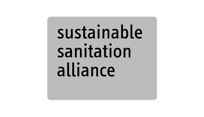Community or shared waste storage is used by several households at once. Householders themselves bring and deposit their waste at these locations. Storage can be permanently built structures or mobile containers; the latter simplifies collection and operation. Reasonable distances to households and accessibility for waste collection vehicles are essential.

Communal and shared waste storage vessels enable waste to be collected from fewer locations than household collections S.1.This reduces travelling distances for waste operators, avoids the need to access narrow residential roads and facilitates the use of vehicles with larger payloads. Due to the weight of mobile containers, collection vehicles must have automated emptying mechanisms. Built stationary waste structures commonly provide less protection from the intrusion of rain, wind and animals. Emptying them is more challenging, requires manual effort and puts operators in close contact with the waste. Shared waste storage requires householders to bring their waste to the facilities themselves. The depositing of waste in communal storage can be facilitated by the additional provision of household storage vessels S.1.
Design Considerations
The design of communal storage must consider the needs of households depositing waste, the operators collecting it and safe waste containment. To prevent potential nuisance from odours, it must not be too close to residential buildings but ideally should be less than 200 m from households to keep carrying distances short. To calculate storage volumes, the longest interval between collections must be considered as well as waste generation volumes, including potential seasonal fluctuations. Ideally, reserve capacity is provided for cases of delayed collections to prevent open dumping U.10 or open burning U.11 of waste when storage containers are full. Communal storage must be accessible to collectors and their vehicles and not put them at risk. Emptying must be fast and efficient. The selected designs should aim to reduce vandalism and theft.
Materials
Stationary structures can be built from concrete, brick or prefabricated concrete pipes. They are less effective for safe waste containment and are challenging to empty. Mobile containers are emptied on the spot or directly transported for further processing. They require collection vehicles with automated emptying and lifting mechanisms. These mechanisms must be compatible with the container types. Mobile containers are commonly made from plastic or galvanised steel; steel has the advantage of being fire and heat-resistant. Mesh structures or metal cages with multiple openings are not ideal for waste storage as waste is easily lost during storage and is more accessible for animals.
Applicability
Communal storage is ideally used in urban settlements or densely populated camps. Containers can be linked to several shelters or even to multi-story housings. Institutions, which create large amounts of waste, might use similar storage facilities. In existing built settlements, initiating new collection points can be challenging due to limited space and access. In emergencies, using communal storage is simpler than direct collections from households, as the planning and execution of collection routes are less complex and travelling distances shorter.
Operation and Maintenance
Communal storage requires dedicated caretaking and regular emptying as they will otherwise become locations for unsafe disposal practices. Supervision of communal storage is recommended and increases the likelihood of correct waste disposal, especially in the case of waste separation P.2. Once waste segregation has been compromised by a faulty waste deposit, it is almost impossible to correct and maintain adequate waste segregation. Householders must be thoroughly trained and introduced to the use of communal waste storage X.6. Storage vessels should be regularly cleaned and maintained, especially the space around them and user interfaces, such as lids. Maintenance and repair must be considered, particularly for movable containers, as they can be damaged during motorised lifting and emptying. If lids are too heavy, damaged or dirty, people may not use the storage facilities.
Health and Safety
Communal storage must allow for convenient and safe waste deposits for individuals and households and enable safe collection for operators. The attraction and presence of wild animals, and disease vectors in particular, must be prevented along with the ingress of rain and leachate of liquids. Light and conveniently movable lids are useful, and storage vessels can be protected with simple shelters. For waste operators, regular occupational health and safety X.4 practices apply.
Costs
The cost of communal storage depends on the storage type, number of storage locations and materials. Financial trade-offs between materials and collection costs may occur as smaller and cheaper storage containers require more frequent emptying. Stationary storage is less expensive but has containment and safety disadvantages and requires a larger workforce. Mobile storage is simpler to operate but is typically more costly and requires mechanical emptying and lifting devices on collection vehicles.
Social Considerations
Communal storage must be in safe and welcoming spots and within a reasonable distance of households. Overall, they should give an appealing and clean impression. Otherwise, they are unused and waste is simply dumped. Assigning staff to communal storage can help people to deposit waste correctly. It is highly unlikely that householders themselves will rectify incorrectly deposited waste, compact the waste or call collection services if containers are full. Where waste segregation is applied at communal storage facilities, the different storage compartments must be clearly marked or colour-coded according to the segregation categories P.2. Training or behaviour change campaigns with the communities are likely to be necessary X.6.
Key Decision Criteria
Input Products
Organic Waste
Organic Garden/Wood Waste
Organic Food/Kitchen Waste
Recyclables
Plastics
Paper and Cardboard
Metals
Glass
Textile
Mixed Waste
Residual Waste
Output Products
Organic Waste
Organic Garden/Wood Waste
Organic Food/Kitchen Waste
Recyclables
Plastics
Paper and Cardboard
Metals
Glass
Textile
Mixed Waste
Residual Waste
Response Phase
Application Level
Management Level
Space Required
medium
Technical Complexity
low
Objectives & Key Features
Safe shared waste storage used by several households
Strength & Weakness
- Can limit traveling distances and time for waste collection
- Can simplify collection routes using larger roads
- Need to be accessible for collection vehicles
- Requires servicing and can require permanent supervision
- Can become locations of unsafe waste deposits
- Achieving waste segregation is challenging
Selected References
Key design features of community and shared storage
UNEP (2005): Solid Waste Management, United Nations Environment Programme, Kenya






